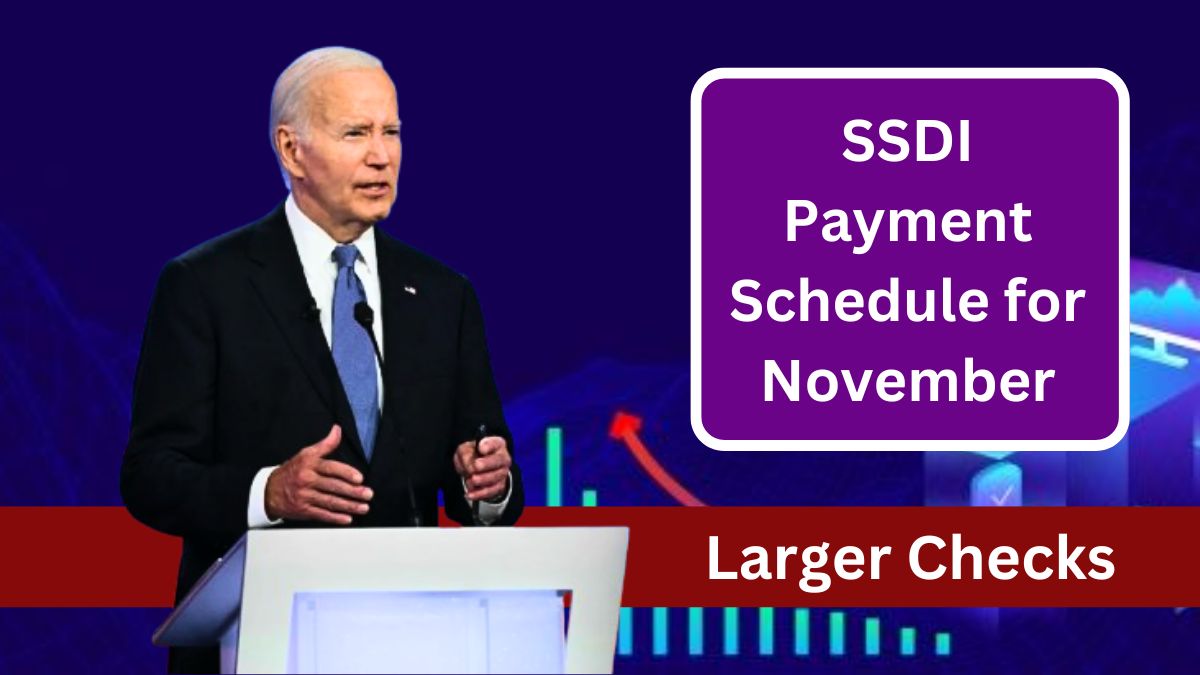Social Security Disability Insurance (SSDI) beneficiaries will see a change in their payment schedule this November, with payments arriving on November 1 instead of the usual November 3. This adjustment, made to accommodate the November 3 date falling on a Sunday, also aligns SSDI payments with Supplemental Security Income (SSI), making it a notable update for those relying on both benefits. Here’s everything you need to know about this early payment date, SSDI requirements, and how these benefits can aid your household budget.
Payment Schedule Change
In November, SSDI payments will arrive on the first day of the month, rather than on the usual third, since the third falls on a Sunday. The Social Security Administration (SSA) opted to release payments two days earlier, ensuring that beneficiaries do not face delays. This adjustment means that SSDI and SSI payments will share the same payment date, providing recipients with more timely access to their funds.
For beneficiaries, this two-day advancement is a significant convenience, particularly for those facing month-end financial constraints. Getting access to payments right at the start of the month can aid in budgeting, especially with SSDI payments averaging around $1,539 and reaching up to $3,822 for those with higher work credits.
Payment Alignment
Since SSI payments are traditionally disbursed on the first of each month, the early SSDI payment date aligns both SSDI and SSI benefits for early November. This shared payment date is a helpful change for individuals who qualify for both programs, as it provides an early financial boost. SSI offers additional support for low-income individuals with disabilities who have minimal resources, while SSDI is based on work credits earned over the beneficiary’s career.
SSDI Requirements
Eligibility requirements for SSDI remain unchanged heading into 2025. To qualify, individuals must meet certain disability criteria and work credit requirements:
- Qualifying Disability: Applicants must have a disability or be legally blind under SSA standards.
- Disability Criteria: The disability must meet SSA’s strict definition, significantly impacting one’s ability to work for at least one year.
- Work Credits: Applicants typically need 40 work credits, equating to roughly 10 years of work. However, younger workers may qualify with fewer credits.
- Application Process: Filing for SSDI is mandatory, with eligibility and benefit amounts dependent on the applicant’s work history and contributions to Social Security.
- Family Benefits: Family members, such as spouses and children, may qualify for benefits based on the SSDI recipient’s record, adding valuable support to the household budget.
Payment Details
| Benefit | Average Monthly Payment | Payment Date for November | Requirements |
|---|---|---|---|
| SSDI | $1,539 (up to $3,822) | November 1 | Disability, work credits, 10 years |
| SSI | Varies based on income | November 1 | Low income, minimal resources |
COLA Increase
Although SSDI beneficiaries can expect a cost-of-living adjustment (COLA) increase in 2025, it won’t come into effect until January. The SSA bases these adjustments on inflation rates, which aim to help recipients maintain purchasing power as the cost of living rises. Therefore, beneficiaries can look forward to a slight increase in SSDI payments in the new year, which may provide additional financial flexibility.
Family Benefits
For families facing financial challenges, SSDI offers additional assistance. A spouse and children may qualify for benefits based on the applicant’s SSDI record, providing an essential income boost. SSI may also be a helpful supplement for families or individuals with low incomes, as it offers monthly payments to help cover basic living expenses.
For SSDI recipients, the upcoming early payment schedule is a small but significant step towards financial convenience. The November 1 payment date gives beneficiaries earlier access to funds, helping them meet financial needs more promptly. With additional support options, such as SSI and family benefits, SSDI remains a lifeline for many, ensuring a more secure financial foundation amid challenging circumstances.
FAQs
Why is SSDI paid on November 1 instead of November 3?
SSDI payments were moved to avoid the November 3 date falling on a Sunday.
What is the average SSDI payment?
The average monthly SSDI payment is around $1,539, going up to $3,822.
Do SSDI recipients get a COLA increase in November?
No, the COLA increase will start in January 2025.
Can family members get benefits under SSDI?
Yes, spouses and children may qualify for benefits on the recipient’s record.
How many work credits are needed for SSDI?
Generally, 40 work credits are needed, which equates to about 10 years of work.











